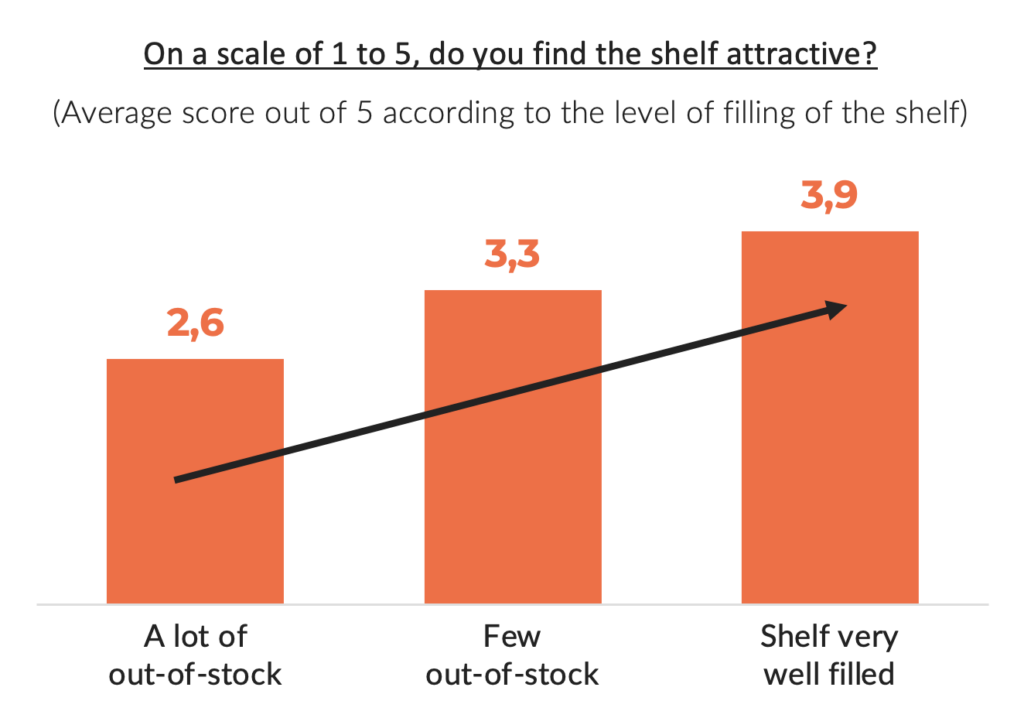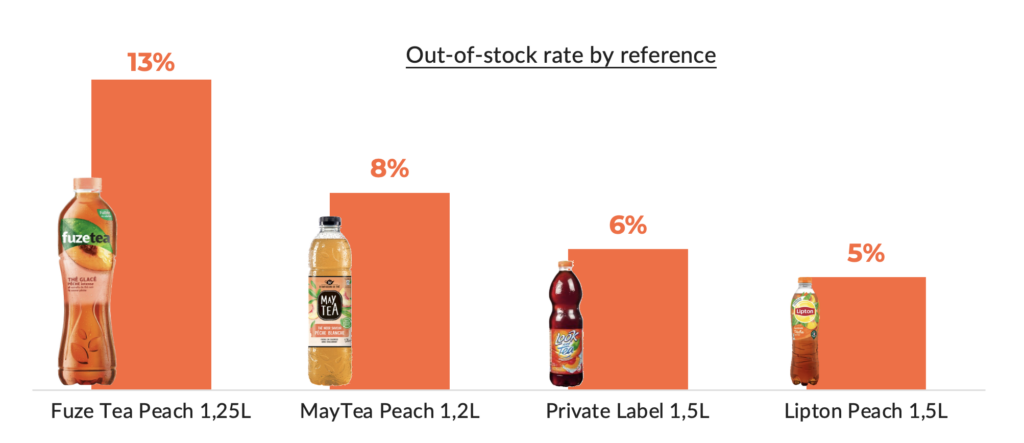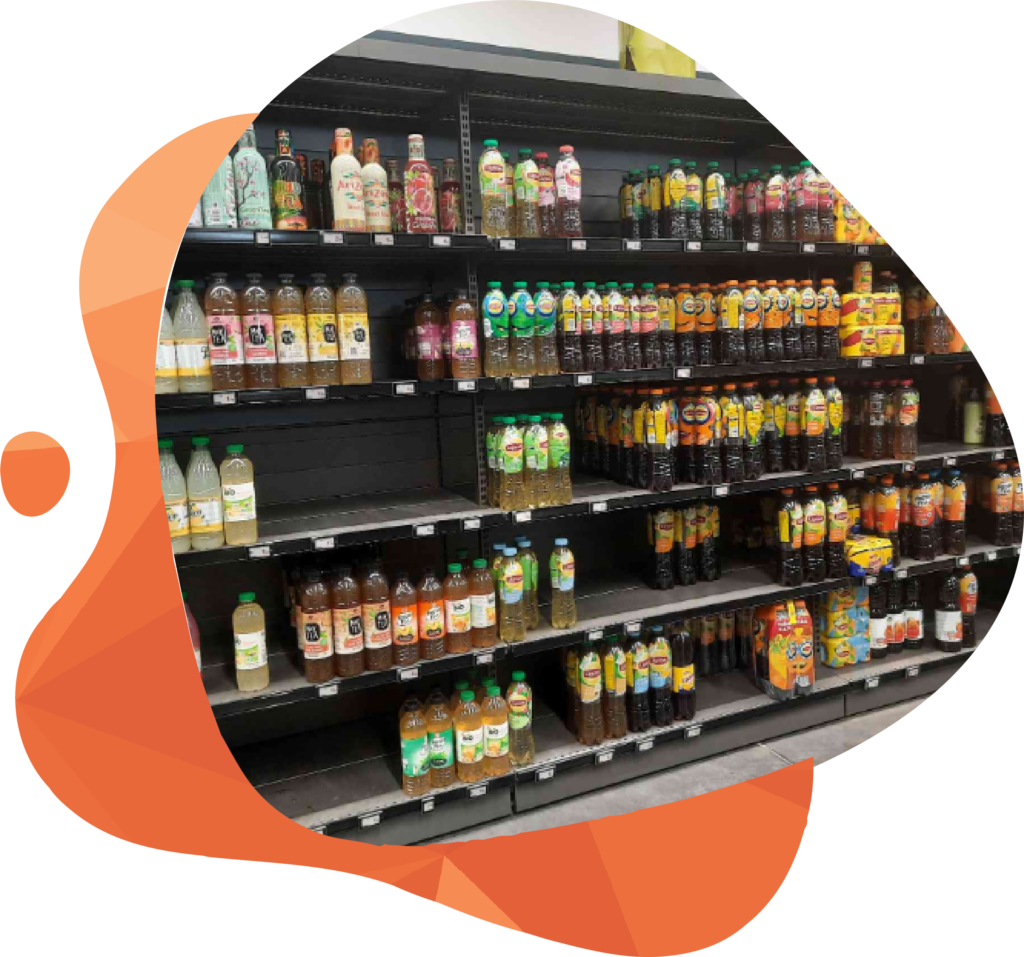Out-of-stocks are a major issue for manufacturers and retailers. They cause a significant loss of earnings, estimated at 4.2 billion euros in hypermarkets and supermarkets according to the latest NielsenIQ figures, and also have a negative impact on the image of stores. To illustrate this challenge, we studied the Tea Drinks category in nearly 200 French hypermarkets and supermarkets in August. Here are some insights:
An impact on the attractiveness of the shelf
Unsurprisingly, a shelf with a lot of OOS is less attractive and makes shoppers less inclined to buy than a well-filled shelf. Good shelf execution is essential for stores, but also for brands in order to attract shoppers and trigger a purchase.

No product is spared
We have selected four leading products in the tea category to measure their OOS rates. Market leaders, growing brands, private labels: all products are affected by OOS. Of the four references, Fuze Tea was OOS most frequently: in 13% of stores.

Leclerc and Carrefour, low performance
Of the four references, we found an average OOS rate of 8%. Leclerc and Carrefour were the lowest performers, with OOS rates of up to 11% and 9.4% respectively. Over the last 5 out-of-stock studies carried out by Roamler, both retailers have always had above average OOS rates. An increased attention to have!
